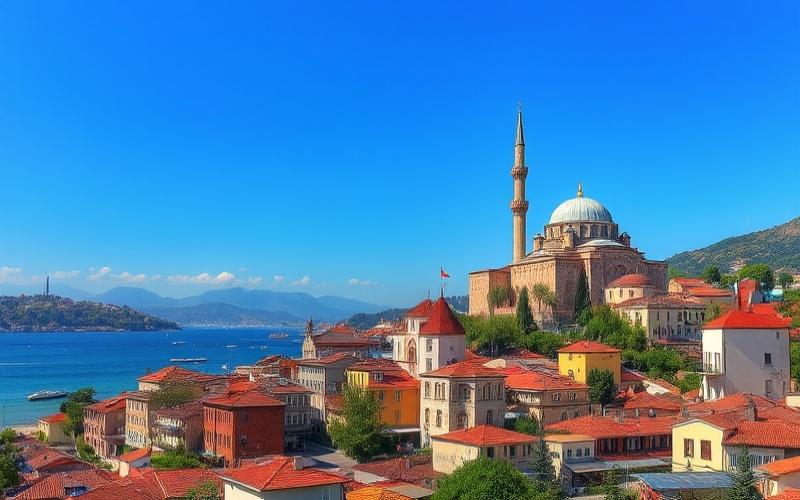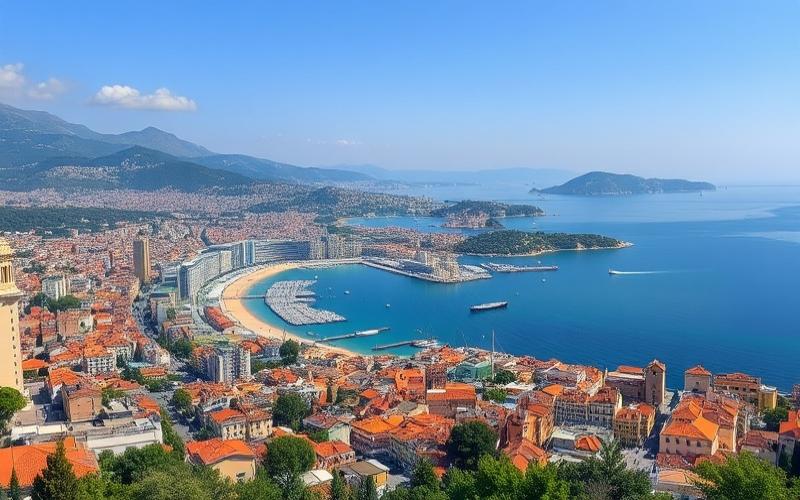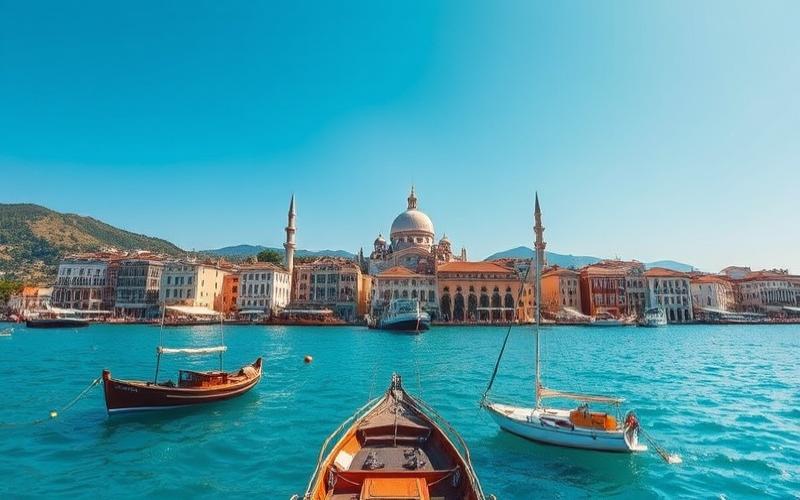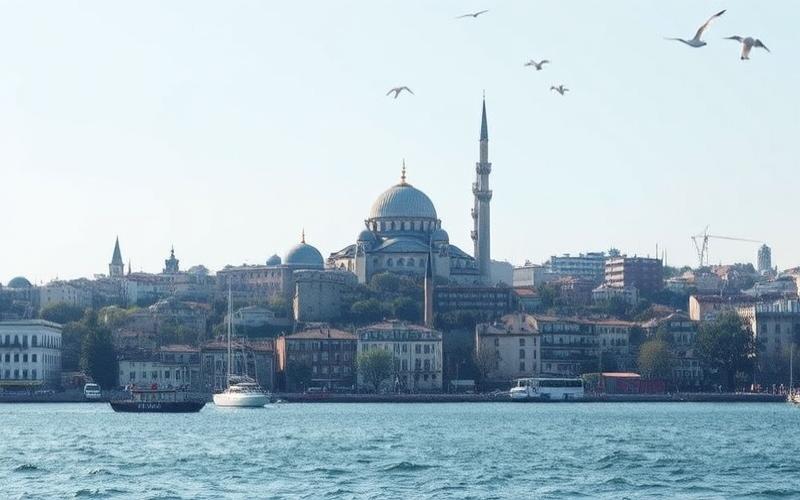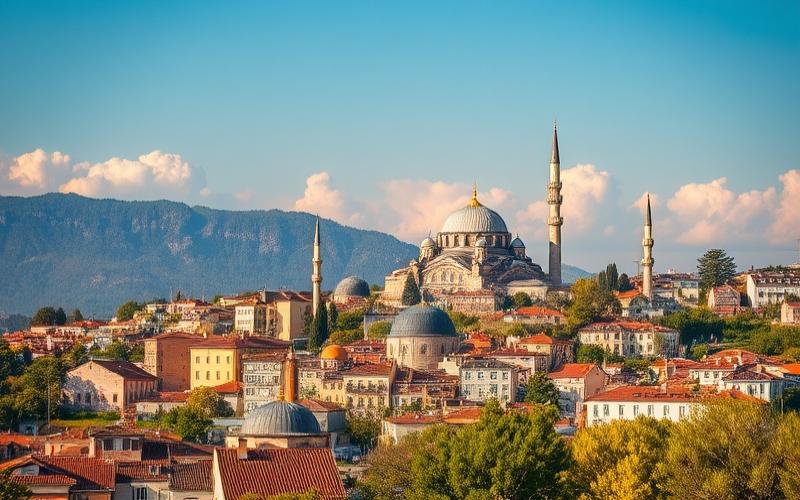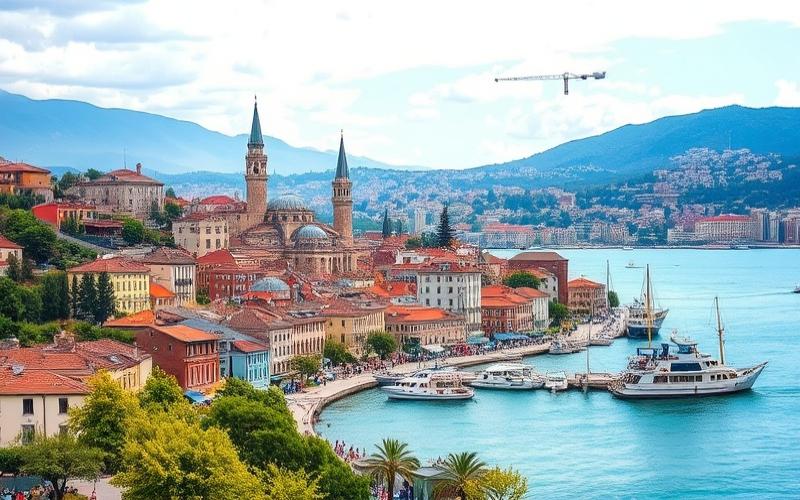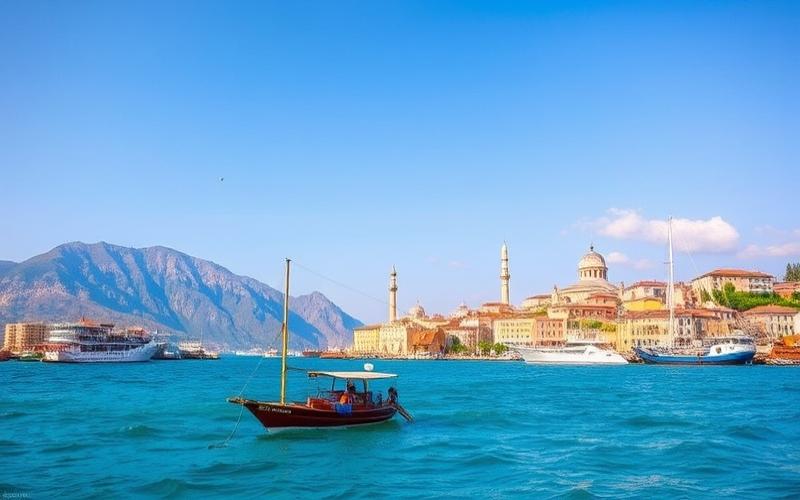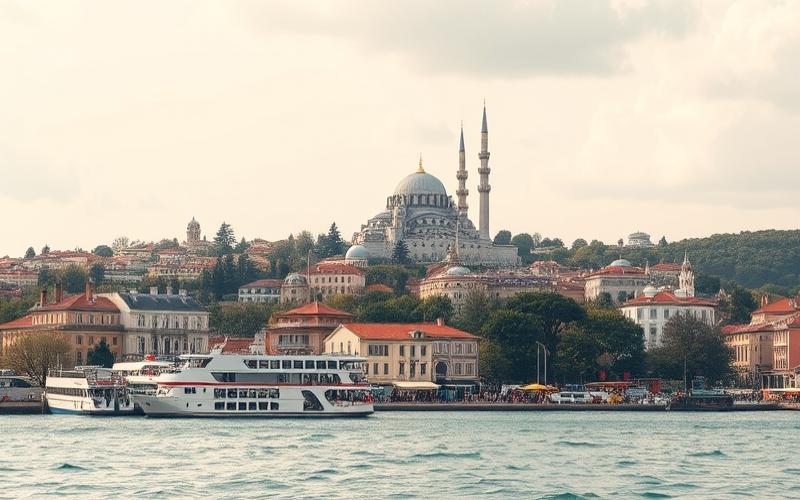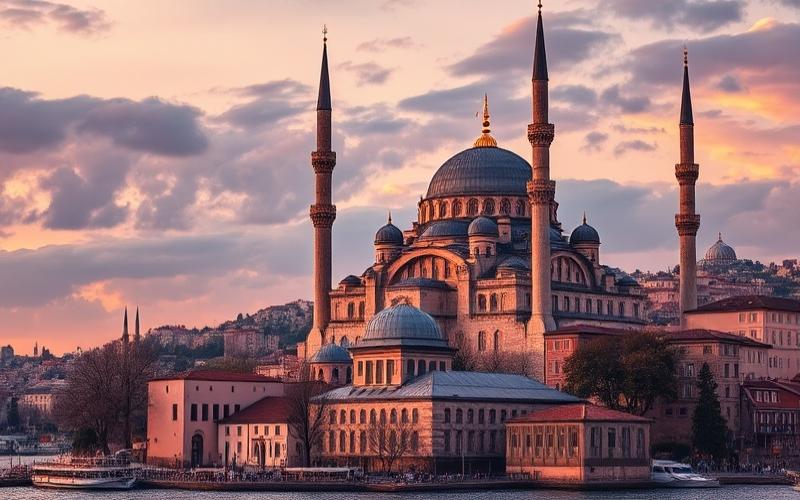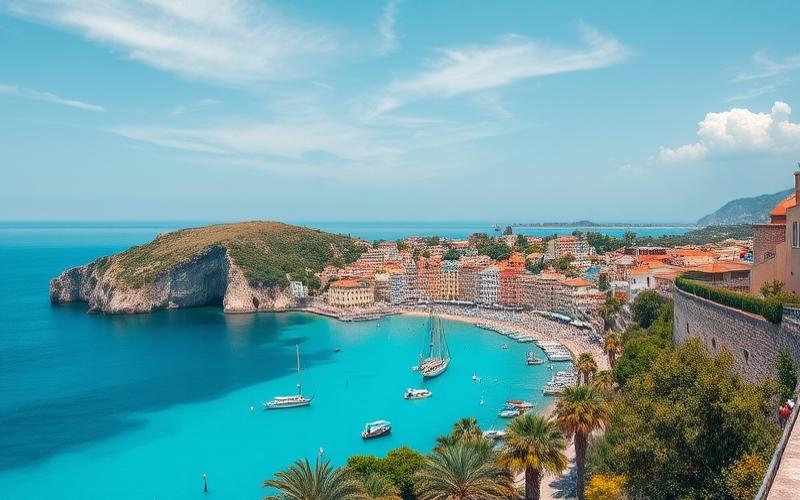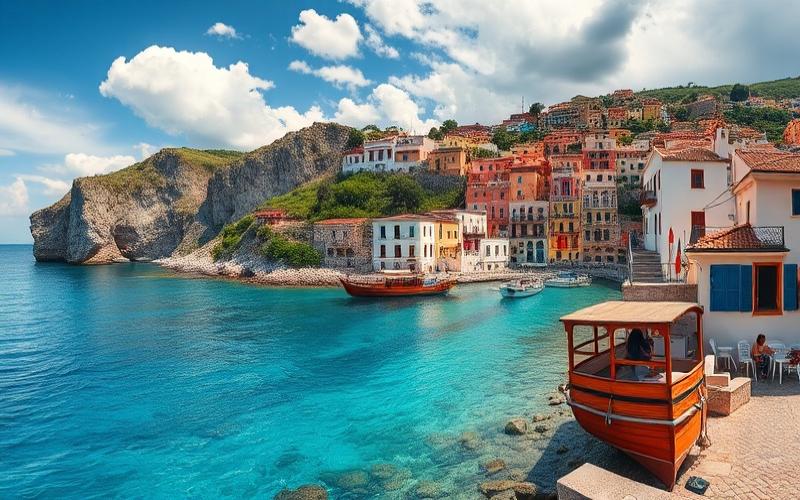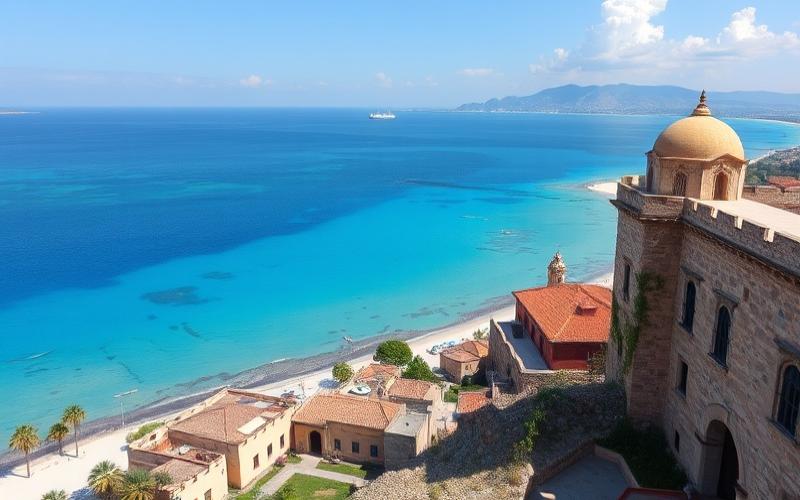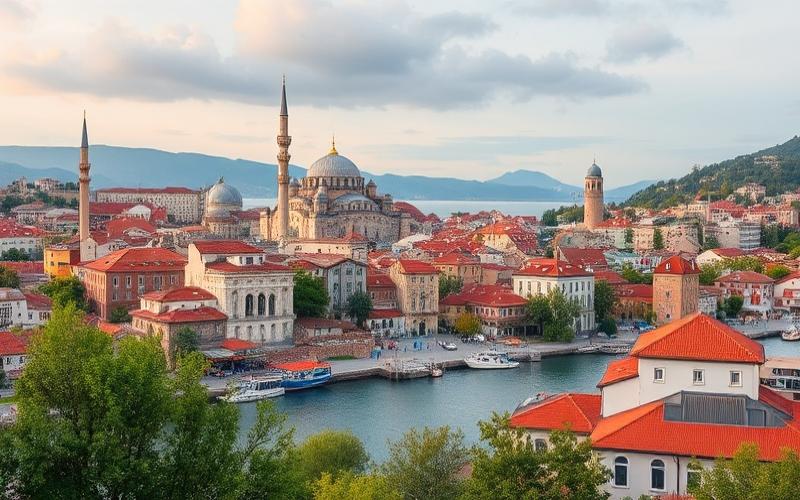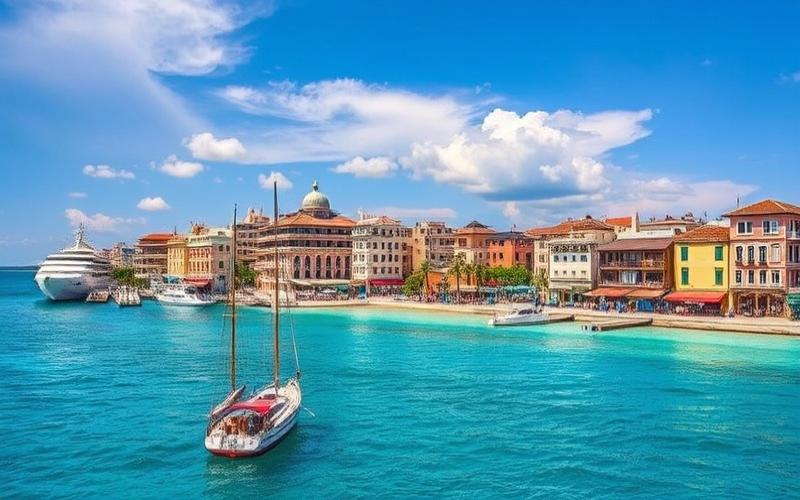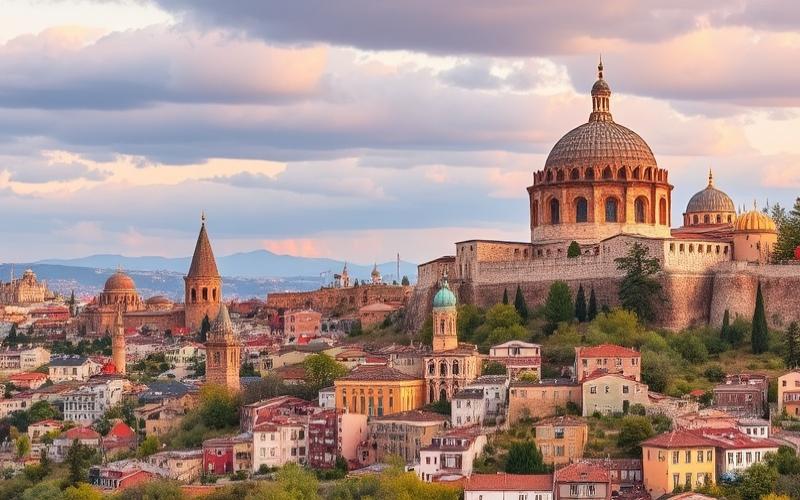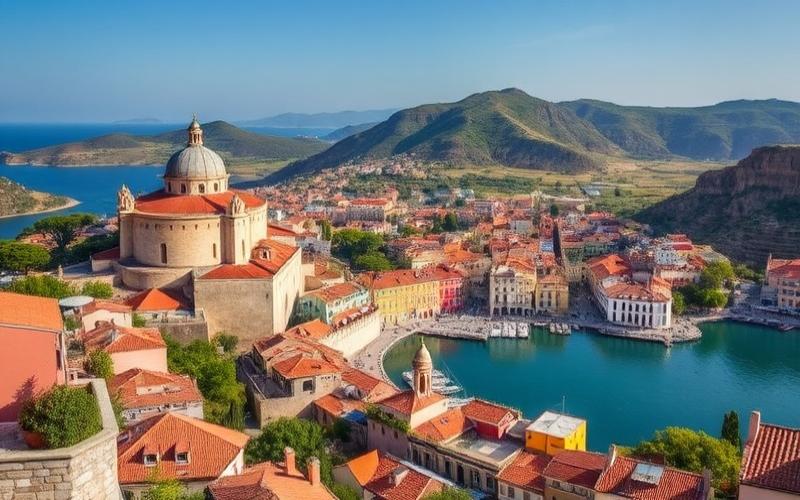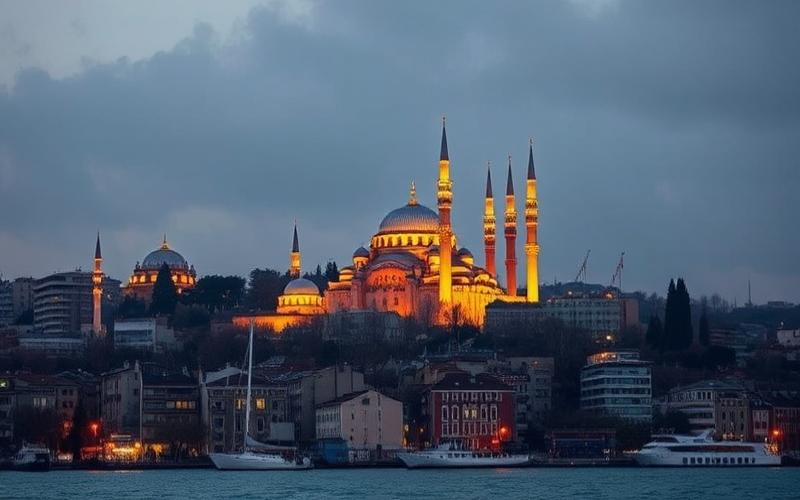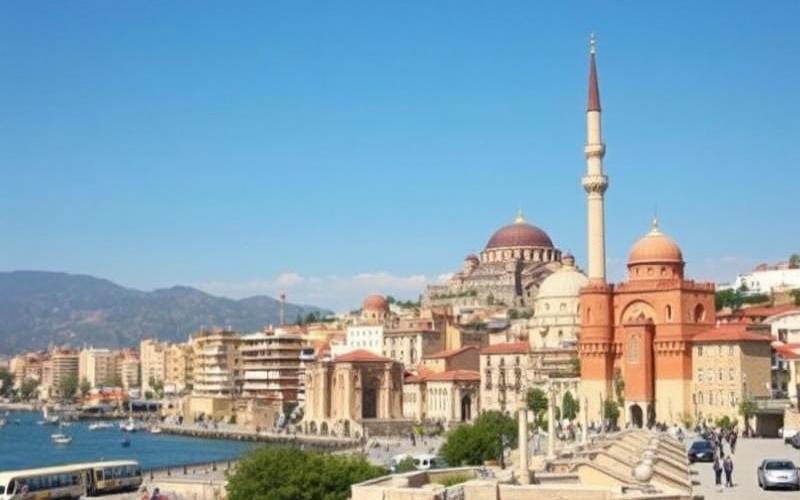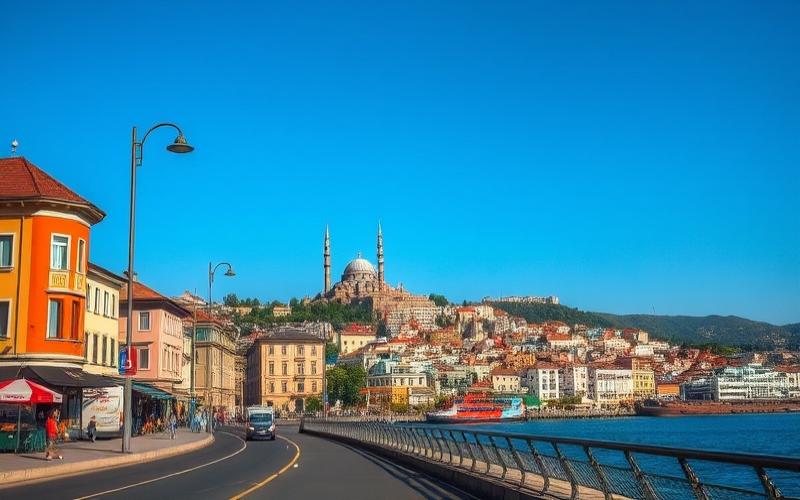
 Published on and written by Cyril Jarnias
Published on and written by Cyril Jarnias
Navigating through Turkey can be an adventure in itself, thanks to its public transportation network stretching from vibrant Istanbul to sublime Cappadocia.
Whether you’re a resident exploring your city’s hidden corners or a traveler seeking new discoveries, understanding how various transportation methods work, such as buses, subways, trams, and ferries, will be essential to making the most of your stay.
Dive into this practical guide that will provide valuable tips and tricks for efficiently using these services, saving time and discovering Turkey from an authentic perspective.
Exploring Transportation Methods in Turkey
Buses
Very dense and economical network, available throughout Turkey.
- Essential for urban and intercity trips; operated by private companies.
- High frequency in major cities (Istanbul, Ankara, Izmir), often operating until midnight or 24/7 in some areas. Buses are generally clean and air-conditioned.
- Stops display the line number, destination, and sometimes waiting time.
- Using a prepaid card (e.g., Istanbulkart) is highly recommended for lower fares.
Subway
Modern systems in Istanbul, Ankara, and Izmir; allows covering long distances quickly while avoiding traffic jams.
- Easy access through mobile apps and maps available at stations or online.
- Operates mainly during peak hours with high frequency (a few minutes between trains).
- Istanbulkart also works for the subway.
Streetcar
Available in Istanbul (historic T1 line & NT on Istiklal), Izmir, Antalya; ideal for connecting neighborhoods not served by subway or covering short distances downtown.
| City | Main streetcar lines | Features |
|---|---|---|
| Istanbul | T1 (historic), NT | Heritage line on Istiklal |
| Izmir | Tram Konak/Karsiyaka | Modern & air-conditioned |
| Antalya | AntRay | Connects downtown & suburbs |
Dolmuş
Typical shared minibuses, widely used:
Operate both within and around cities like Istanbul, Ankara, Antalya, or Bodrum. Some even connect nearby towns like regional buses.
Main characteristics:
- Flexible trips without fixed schedules: departure when full or nearly full
- Boarding/alighting possible outside official stops
- Direct payment to driver (~15–30 ₺ for short trips)
- Ideal for areas not served by regular buses
Intercity Rail Network
Main types:
- High-speed trains: mainly connect western Turkey — Istanbul-Ankara-Konya
- Conventional trains & night trains: cover the entire east-west axis (Dogu Ekspresi Ankara-Kars, Mavi Tren, etc.)
Characteristics:
- Tickets reservable at stations or via TCDD app
- Comfortable, affordable sleeper compartments; note rules on gender segregation
- Frequent stops on long journeys
Summary table:
| Type | Cities/Regions served | Advantages |
|---|---|---|
| High-speed | Istanbul – Ankara – Konya | Speed/comfort |
| Conventional train | Entire country | Affordable price/scenic views |
Maritime Crossings
Common options:
- Urban ferries in Istanbul: Bosphorus crossings between Europe/Asia (Eminönü–Kadıköy–Üsküdar…)
- Regional ferries to Princes’ Islands from Kabataş/Bostancı/Istanbul
Advantages:
– Avoids road traffic jams
– Exceptional panoramic views of the city/coastline
Fares generally included in local cards like Istanbulkart, frequency varies by season but often every ~20 minutes.
Transport Cards / Passes Facilitating Mobility
Main cards used:
- Istanbulkart, Ankarakart, Izmirim Kart, etc. — rechargeable and valid on all local public transport except private dolmuş;
- Integrated fare system allowing free/discounted transfers for a limited time;
- Purchase possible at automated kiosks/stations/tobacco shops.
Practical traveler tips:
- Always prioritize getting a rechargeable local card upon arrival: it avoids queues; reduced fares vs. individual purchase from driver/paper ticket;
- Have local currency ready for dolmuş/minibuses that don’t always accept electronic cards;
- Check schedules via official apps or Google Maps before nighttime/weekend travel when frequency may decrease;
- Always verify the final stop before boarding, especially in large urban areas where multiple lines intersect;
Important tip
To optimize your stay: download a dedicated Turkish urban transport app suited to your destination city. It allows quick planning of multimodal routes (bus/subway/streetcar/ferry).
Good to know:
In Turkey, buses are a dominant means of transportation with comprehensive networks in practically all cities, offering high service frequency in Istanbul, Ankara, and Izmir. Subways, mainly present in Istanbul and Ankara, are fast and often more comfortable for long intra-urban distances. Streetcars, meanwhile, are popular for shorter trips, particularly in Istanbul. A unique transport mode is the dolmuş, a shared minibus practical for flexible and economical trips, especially in urban and tourist areas. For long distances, the rail network, notably the high-speed train connecting Ankara to Istanbul, is a comfortable option. Maritime crossings like ferries between Istanbul and nearby islands are ideal for exploring new perspectives. Useful tips include avoiding rush hours for bus and subway trips for more comfort, and always checking ferry and train schedules online to better plan your travels.
Choosing the Right Mode of Transport
Main Public Transport Modes in Turkey
| Mode | Availability | Frequency | Average Price | Advantages | Disadvantages |
|---|---|---|---|---|---|
| Bus | Very widespread | 2-15 min urban | Low | Economical, vast network | Traffic, variable schedules |
| Subway | Major cities | 3-8 min | Moderate | Fast, avoids traffic | Limited to served areas |
| Streetcar | Urban, tourist | 5-10 min | Low to moderate | Comfortable, scenic | Crowded during rush hours |
| Dolmuş (minibus) | Everywhere | Very frequent | Very low | Flexibility, numerous stops | Limited comfort, cash payment |
Criteria for Choosing the Right Transport Mode:
- Trip distance: Subway and streetcar are suited for long distances or direct routes between major neighborhoods. Bus and dolmuş are preferred for short or cross-town trips.
- Price: Dolmuş remain unbeatable price-wise; subway is slightly more expensive but remains affordable. Buses are generally economical.
- Availability & frequency: Subway and streetcar run at regular intervals all day. Dolmuş pass very frequently but can be crowded.
- Comfort & accessibility: For more space and less waiting, prefer modern subways in large cities; for an authentic local experience or fine connections between poorly served neighborhoods, opt for dolmuş.
Advantages and Disadvantages by Profile
For a resident:
- Using a magnetic card (Istanbulkart) facilitates all trips across multiple modes.
- Checking local apps helps avoid traffic jams or delays.
For a tourist:
- Prefer subway/streetcar to quickly discover multiple major sites without urban traffic.
- Experience dolmuş at least once for its typical Turkish ambiance — be sure to have exact change in cash.
Useful Mobile Apps/Websites
Quick list of essential tools:
- IBB CepTrafik, Moovit, Google Maps Transport Turkey
- Official sites like Istanbulkart (recharge/planning)
- Intercity bus company apps: Kamil Koç, Metro Turizm
Recent Anecdotes/Data
In 2025, Istanbul recorded nearly 7 million daily public network users. The M2 subway line crosses seven main districts with trains every five minutes during peak hours. According to various local surveys among Istanbul residents that year:
- Over 60% prefer subway/streetcar to avoid road congestion
- Dolmuş remains popular with students and workers early morning/evening due to its flexibility
Practical Tips
Quick list:
- Always check the route on an app before departure (frequent changes).
- Have enough cash if taking a dolmuş outside downtown.
- Look for digital kiosks in main stations: they display interactive multilingual maps.
Local tip: Ask fellow passengers in a dolmuş for advice — it’s common and often effective!
Good to know:
Choosing the right transport mode in Turkey depends on several factors: for short urban trips, streetcars and subways are fast and frequent, with İstanbulkart offering a convenient and economical way to pay fares. Dolmuş, ideal for less well-served areas, provides flexibility through its ability to stop on demand, although comfort may vary. Buses cover long distances at lower cost but can be subject to traffic. It’s advisable to use apps like Moovit or Google Maps for real-time routes. In 2022, Istanbul’s subway was ranked among Europe’s most efficient, indicating its growing popularity. Tourists should familiarize themselves with signs often only in Turkish and anticipate rush hours to avoid crowds.
Transport Budget for Expatriates in Turkey
Types of Public Transport Available in Turkey
- Subway: Present in major cities (Istanbul, Ankara, Izmir), efficiently serves main neighborhoods.
- Bus: Very dense network, covering cities and suburbs.
- Streetcar: Mainly in urban centers (Istanbul, Izmir, Antalya), ideal for intra-city trips.
- Ferry: Mostly in Istanbul, connects both shores of the Bosphorus and serves many islands and neighborhoods.
- Funicular and cable car: Complementary solutions in some cities, notably Istanbul.
Comparative Table of Average Fares (2025)
| Transport Mode | Single Fare (TRY) | Single Fare (€) | Main Remarks |
|---|---|---|---|
| Bus / Subway / Streetcar / Funicular | 27 | ~0.75 | Flat fare, transfers possible |
| Metrobus (Istanbul) | 40.08 | ~1.10 | Higher fare, long distance |
| Marmaray (urban train) | 59.76 | ~1.65 | Crosses Bosphorus, distance-based price |
| Ferry (Şehir Hatları) | 27 | ~0.75 | Standard fare on public lines |
| Dolmuş (shared minibus) | 25 | ~0.70 | Price varies by distance |
| Taxi (flag drop) | 42 | ~1.15 | Minimum fare 135 TRY (~€3.70) |
Passes and Prepaid Cards
- Istanbulkart: Rechargeable card valid on all transport modes in Istanbul. Single trip price: 27 TRY.
- Monthly Istanbulkart pass: 2,118 TRY for unlimited use (approx. €60), particularly advantageous for expatriates making daily trips.
- Monthly student pass: 381.37 TRY (approx. €11).
- Unlimited daily cards: Available for 1, 3, 5, or 7 days, ideal for newcomers or visitors.
Practical Tips for Saving on Transport
- Prioritize purchasing an Istanbulkart or monthly pass if making more than two trips daily.
- Avoid taxis for regular trips: public transport is much cheaper and generally reliable.
- Use transfers within two hours to benefit from reduced fares on 1st and 2nd transfers (19.33 TRY for the 1st).
- Avoid single tickets and opt for recharges or passes, especially for expatriates working or studying full-time.
- Check special offers or discounts for students or seniors.
Examples of Typical Costs for Frequent Trips
- Round trip home-work (2 trips/day, 22 workdays):
Without pass: 27 TRY × 2 × 22 = 1,188 TRY/month
With monthly pass: 2,118 TRY/month (unlimited trips) - Subway + ferry combination:
Subway: 27 TRY + Ferry: 27 TRY = 54 TRY per one-way trip - Long-distance Metrobus trip:
40.08 TRY × 2 × 22 = 1,763.52 TRY/month
Comparison with Other European and Middle Eastern Countries
| Country | Single Ticket (€) | Monthly Pass (€) | Comment |
|---|---|---|---|
| Turkey (Istanbul) | 0.75 | 60 | Very affordable, dense network |
| France (Paris) | 2.15 | 86 | More expensive, but highly developed network |
| Germany (Berlin) | 3.20 | 86 | One of Europe’s most expensive |
| Spain (Madrid) | 1.50 | 55 | Similar to Istanbul for passes |
| United Arab Emirates | 1.40 | 60 | Prices close to Istanbul’s |
Key Takeaways
Public transport costs in Turkey remain significantly lower than Western Europe’s average. For expatriates, using a monthly pass significantly reduces daily transport budget.
Systematically use passes or rechargeable cards to maximize savings.
Good to know:
In Turkey, expatriates can choose from various public transport means, including buses, subways, streetcars, and ferries, generally affordable. The average cost of a single ticket for these services is about 15 to 20 TRY, while a monthly transport card is around 600 TRY, offering notable savings for frequent users. To maximize savings, expatriates can opt for prepaid cards like Istanbulkart that offer significant discounts per trip. For example, a subway trip in Istanbul with a prepaid card costs about 10 TRY, compared to full fare. Compared to other European or Middle Eastern countries, transport fares in Turkey are often lower, which can be advantageous for expatriates accustomed to higher transport costs. Adopting trips during off-peak hours or combining multiple transport modes can also help reduce overall transport expenses.
Disclaimer: The information provided on this website is for informational purposes only and does not constitute financial, legal, or professional advice. We encourage you to consult qualified experts before making any investment, real estate, or expatriation decisions. Although we strive to maintain up-to-date and accurate information, we do not guarantee the completeness, accuracy, or timeliness of the proposed content. As investment and expatriation involve risks, we disclaim any liability for potential losses or damages arising from the use of this site. Your use of this site confirms your acceptance of these terms and your understanding of the associated risks.


